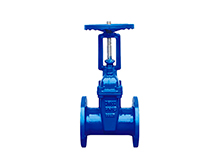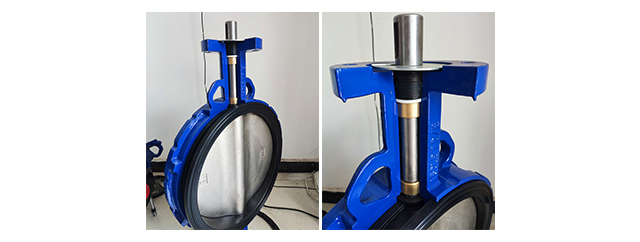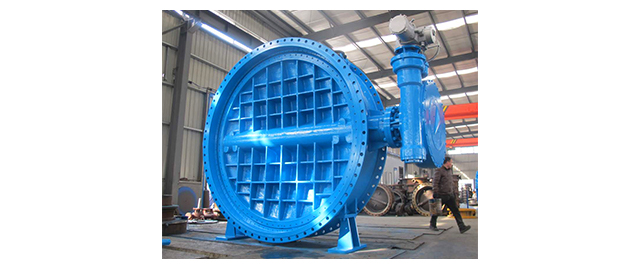- Gate valve
-
- BS5163 rising stem soft seal gate valveDN1000 Extension stem double flange soft seal gate valveWEIZIDOMDIN F4 resilient seated gate valveDN450-1200 Resilient Seated Gate ValveDIN F5 resilient seated gate valveSocket connection soft seal gate valveWEIZIDOMUnderground cap soft seal gate valveHard seal gate valveAPI slab Gate ValveStainless steel flange gate valveWafer knife gate valvePneumatic gate valveSoft seal gate valveExtension stem gate valveUL/FM fire protection groove ends gate valveRising stem forged steel gate valvecarbon steel gate valveStainless steel threaded gate valveDIN soft seal gate valveANSI soft sealing gate valve 200PSICast iron gate valveBS resilient seated gate valve
- Butterfly valve
-
- DN900 pneumatic triple eccentric hard seal butterfly valveD643H Triple Eccentric Butterfly ValveD343H Hard seal butterfly valveMulti standard EPDM seated butterfly valveSingle flange butterfly valveDN2000 Double eccentric butterfly valveFlange butterfly valveLug butterfly valveWafer butterfly valve with handleWorm gear operated butterfly valveWafer lined fluorine butterfly valveStainless steel wafer butterfly valveStainless steel flanged butterfly valveThree eccentric flange butterfly valvePneumatic flanged butterfly valvePneumatic wafer butterfly valveTriple eccentric butterfly valve wafer typeWafer butterfly valve ULC approvedInflatable seat butterfly valveHigh performance butterfly valveGrooved end butterfly valveElectric soft seal butterfly valveFlange fluorine lined butterfly valveHandle aluminum butterfly valveWorm Gear Aluminum Butterfly ValveFull PTFE lined butterfly valve wafer typeOne stem no-pin wafer butterfly valveMulti standard aluminum stem butterfly valveStainless Steel wafer Butterfly ValveAluminium handle operated lug butterfly valveLever Operated Flange Butterfly ValveButterfly valve stemButterfly valve discButterfly valve seat
- Ball valve
-
- DN1400 top-mounted eccentric semi-ball valveFlanged three-way ball valveFully welded ball valveNatural gas ball valveHigh platform flange ball valve1 PC ball valveFixed ball valvePTFE seat flanged ball valveMetal seat ball valveAPI 6D ball valve3 Piece ball valveFull Bore 3 way ball valve L-Port3 Way T-Port ball valve2PC Ball valve female thread stainless steel
- Globe Valve
-
- API Carbon Steel Globe ValveBellows Globe ValveStainless steel flange globe valveStainless steel thread S type globe valveStainless steel thread B type globe valveCast Steel Globe ValvePiston Globe ValveWCB Carbon Steel Globe Check Valveelectric motorized control stainless steel SS316 globe valveBrass Globe ValveCryogenic Globe valveHT200 Globe ValveThreaded Stainless Steel Globe ValveGG25 Globe ValveANSI API Cast Steel And Stainless Steel Globe valve
- Check valve
-
- Rubber seal check valveDN800 Slow closing check valveDN800 Rubber Disc Check ValveButterfly Buffering Check Valvecheck valve with counter weightSilent Check ValveWCB Swing check valveSwing Check ValveSingle Chip Check Valve H74WStainless Steel Wafer Check ValveSwing Start Check ValveFoot check valveAPI Swing Check ValveDIN Flange check valveSingle plate check valveLifting Check ValveBottom ValveHammer Diminish Noises Check ValveWafer Check ValveWafer dual plate check valve
- Control valve
-
- Static Balancing ValveCage Guided Sleeve Globe Control ValveDN1000 Piston Flow Regulating ValveDN1600 Electric Actuator Flow Regulating ValvePneumatic Flanged Butterfly ValvePneumatic Wafer Butterfly ValveAngle Seat ValvePneumatic gate valveElectric three-way control valveElectric sleeve control valve
- Water Meter
-
- Vertical Type Water MetersStainless steel threaded water meterPiston water meterPlastic water meterMore flow rotor dry water meterspiral vane flange water meterCI wotlman water meter with pulse outputLXCLG(R) Vertical removable element woltman cold (hot) water meterSingle flow rotor dry water meterPrepaid Token Water MeterElectromagnetic flowmeterRotary Piston Liquid Sealed Water MeterRotary Piston Liquid Sealed Water Meter
- Air valve
-
- Double ball exhaust valveDoubleair Air Valve SaudiDoubleair Air Valve Southeast AsiaDoubleair Air Valve South AmericaDouble Air ValveThreaded Air ValveSingle Air ValveTriple Functions Air ValveAutomatic Air Release ValveAutomatic release valveAutomatic exhaust valveComposite Exhaust Air ValveBrass exhaust valveDouble Ball Air Valve
- Pipe Repair & Coupling
-
- Flexible Multi-Function Pipe Coupling ZFJ-SSS Semi-Circle Pipe Repair Clamp SJW-HDuctile Iron Band Repair ClampStainless Steel Band Repair ClampDouble-Section Pipe Repair CouplingFolding Type Pipe RepairSingle-Section Multi-Function Pipe Coupling MF-SGear-Ring Type Multi-Function Pipe Coupling GR-SZBW Damping Corrugated Hose
- Dismantling Joint
-
- VSSJAFC(CC2F) Detachable Flange Transmission JointVSSJA-2(B2F) Double Flange Limited Expansion JointVSSJA-1(BF) Single Flange Limited Expansion JointVSSJA(AF) Flange Loose Expansion JointJGD-B Threaded Rubber JointZBW Damping Corrugated HoseKXT-S Flexible Dual-Spherical Rubber JointKXT Rubber Soft JointFlange Adaptor
Butterfly valve installation environment and maintenance precautions
Butterfly valves can be used indoors or outdoors, but in corrosive media and situations prone to rust, corresponding material combinations must be used. For special working conditions, please consult Zhongzhi Valve.
Installation location:
Install it in a place where it can be safely operated and easy to maintain, inspect and repair.
Surroundings:
Temperature -20℃~+70℃, humidity below 90%RH. Before installation, you should first check whether the valve meets the working conditions and usage requirements according to the nameplate mark on the valve.
Note: Butterfly valves do not have the ability to withstand high pressure differences. Do not allow butterfly valves to open or continue to flow under high pressure differences.
Before installation, please remove dirt, oxide scale and other impurities in the pipeline. When installing, please note that the flow direction of the medium should be consistent with the flow direction arrow marked on the valve body.
Align the center of the front and rear piping, make the flange interfaces parallel, and tighten the screws evenly. Note that the pneumatic butterfly valve does not have excessive piping stress on the cylinder control valve.
Daily inspection: Check for leaks, abnormal noise, vibration, etc.
Regular inspections: System components such as valves should be regularly checked for leaks, rust, and jamming, and should be maintained, cleaned, dusted, and stained.
Disassembly inspection: The valve should be disassembled and inspected regularly. During disassembly and inspection, the parts should be re-flushed, foreign matter, stains and rust spots should be removed, damaged or severely worn gaskets and packings should be replaced, and the sealing surface should be corrected. After inspection, the valve should be re-tested by hydraulic pressure, can be reused only after passing the test.
Electric butterfly valve troubleshooting method:
By electric butterfly valves, which are included in this category, the valve body has a conventional valve that passes through the structure and intersects a cavity with the door, with the cavity opening and closing between the positions, and an actuator responsible for moving these positions between the doors.
As is also the case with this type of valve, the actuator consists of a hood mounted on the valve body with a stem connected to the additional valve.
Electric valve actuators are generally composed of an electronic control part and a power part. Therefore, common faults in electric valve actuators can be divided into control part faults and power part faults.
The power of electric valve actuators is generally provided by motors, so it is necessary to master some knowledge about motors.
In this way, we can discover and eliminate potential accident hazards of the electric motor on the electric actuator as soon as possible, and ensure the safe operation of the electric actuator and electric valve.
1. Motor sweep:
The gap between the stator and rotor of the motor is very small, which can easily cause the stator and rotor to collide. Once the base, end cover, and rotor have different axes, it will cause the stator and rotor to collide, which is often called chamber sweeping.
Common factors causing different axis phenomena are:
The motor bearing is seriously out of tolerance, the inner hole of the end cover is worn, and the stop hole of the end cover and the base stop hole are worn and deformed. If these phenomena are found, the bearing should be replaced, or the end cover should be replaced or brush-plated.
Vibration should first be distinguished whether it is caused by the motor itself, caused by a defective transmission device, or transmitted from the mechanical load end, and then eliminated according to the specific situation.
Vibrations caused by the motor itself are mostly caused by poor dynamic balance of the rotor, poor bearings, bent shafts, or different axes of the end cover, base, and rotor; or the motor installation foundation is uneven, the installation is not in place, and the fasteners are loose. of. Vibration creates noise and creates additional loads.
If the bearing is not working properly, it can be judged based on experience using hearing and temperature. Use a listening rod (copper rod) to touch the bearing box. If you hear an impact sound, it means that one or several balls may be broken. If you hear a hissing sound, it means that the lubricating oil of the bearing is insufficient. It is not easy to add too much grease. If it is too much, there will be great friction between the rotating part of the bearing and the grease and heat. Generally, the grease in the bearing box is about one-half to one-third of the total dissolved volume. The second is enough. If the bearing is installed incorrectly and the fitting tolerance is too tight or too loose, it will also cause the bearing to heat up.
① The electric butterfly valve has a simple structure, consisting of only a few parts and saves material consumption;
② Small size, light weight, small installation size, small driving torque, pressure regulating valve, easy and agile to operate, it can quickly open and close by just rotating 90°; and it also has good flow adjustment function and sealing characteristics. Application areas of large and medium diameter, medium and low pressure.
③ When the electric butterfly valve is in the fully open position, the thickness of the butterfly plate is the resistance when the medium flows through the valve body, so the pressure drop generated by the valve is very small, so it has good flow control characteristics.
④ Electric butterfly valves have two sealing types: elastic seal and metal seal. For elastic sealing valves, the sealing ring can be embedded in the valve body or attached to the periphery of the butterfly plate. Valves with metal seals generally have a longer service life than valves with elastic seals, but it is difficult to achieve complete sealing. Metal seals can adapt to higher operating temperatures, while elastic seals have the disadvantage of being temperature limited.
⑤ Electric butterfly valves are not only widely used in general industries such as petroleum, gas, chemical industry, and water treatment, but are also used in the cooling water system of thermal power stations.
⑥ Commonly used electric butterfly valves include wafer-type electric butterfly valves and flange-type electric butterfly valves. The wafer-type electric butterfly valve uses studs to connect the valve between two pipe flanges. The flange-type electric butterfly valve has a flange on the valve, and bolts are used to connect the flanges at both ends of the valve to the pipe flange.










